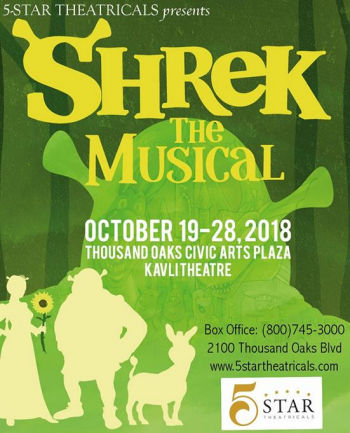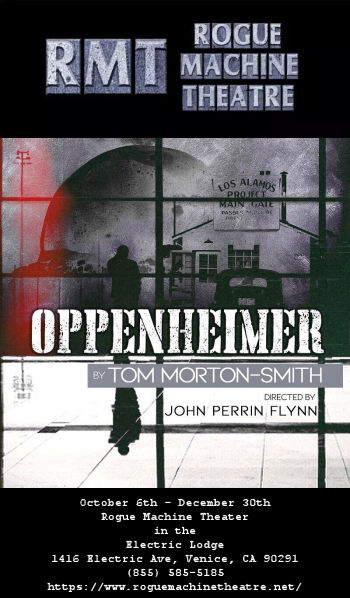 October has been a busy month. Adding maps to the county routes was completed, and I’ve started work on doing a normal round of updates. Elections are soon here, and if you want to see progress on California’s roads continue, vote “NO” on Proposition 6. You can find my summary ballot post here — it points to all the more detailed posts. About Proposition 6, I say:
October has been a busy month. Adding maps to the county routes was completed, and I’ve started work on doing a normal round of updates. Elections are soon here, and if you want to see progress on California’s roads continue, vote “NO” on Proposition 6. You can find my summary ballot post here — it points to all the more detailed posts. About Proposition 6, I say:
Repeals a 2017 transportation law’s taxes and fees designated for road repairs and public transportation. Fiscal Impact: Reduced ongoing revenues of $5.1 billion from state fuel and vehicle taxes that mainly would have paid for highway and road maintenance and repairs, as well as transit programs.
You have to ask on this one? I’m the California Highway Guy.
Let me give some history on how California has traditionally funded its roads. I’m quoting from my Chronology here: In 1947, in response to the recommendations of the Joint Interim Commission on Highways, Roads, Streets, and Bridges, the Legislature passed the Collier-Burns Act (Chapter 11). This act, among other things, (a) Raised the gasoline and diesel fuel tax to 4.5 cents per gallon; (b) Increased automobile registration fees from $3 to $6, with a proportionate increase in the weight taxes on trucks; (c) Created a fund for all highway revenues and motor vehicle taxes. (d) Revised apportionment of revenues from fuel taxes to cities, counties, and the state. (e) Directed gasoline tax and registration fee revenues toward construction of freeways in urban areas and highways in rural areas of the state. (f) Divided state highway construction funds with 55% allocated to the southern half of the state, and 45% to the northern half of the state. This was a significant shift from the previous 49%/51% allocation. This also provided minimum funding for each county. Since 1947, the fuel tax increased very little, certainly not equivalent to the increase in costs. During that time, fuel economy went down, more cars went electric, and construction costs skyrocketed. There were insufficient funds for maintenance. So about a year ago, the legislature passed SB1. This increased the exise tax and diesel fees, increased other fees such as weight fees and fees for vehicles that don’t use fuel. There are specific purposes for which these funds can be spend — basically, things under the purview of the California Transportation Commission. This includes not only roads, but transit, air facilities, rail, and such. It can also be spent on local (city and county) highways. The law has strict rules on accounting for costs. There is complete transparency on how the funds are being spent; just visit http://rebuildingca.ca.gov/.
There are some people who are upset that the fuel tax went up, notably Republicans who hate any form of tax. Never mind that this is a tax that is going to services paid for by the users of those services. Never mind that having safe roads and modern transit systems make the state better for business and to live in.
The “Yes” side is intentionally trying to mislead. They bring up problems with mismanagement at the DMV. Never mind the fact that this tax has nothing to do with the DMV. They bring up problems with mismangement of high speed rail. Never mind the fact that SB1 has nothing to do with high speed rail. They want you to translate your hatred of DMV or transportation bureaucracy into voting down an excise tax the greatly benefits, and already has benefited, the state.
The “No” side has almost unified support from the cities and the media. If you read my headline article, you’ll find the editorials. SacBee: “Hating Caltrans isn’t a reason to repeal the gas tax“. LA Times: “It’s hard to overstate how destructive Proposition 6 would be for California. Vote no.”. SF Chronicle: “No on Proposition 6 — cynical political ploy would destroy California’s roads“. Redding (a part of the state that doesn’t love taxes): “Gas tax increase repeal supporters not telling entire story to voters“. Mercury News: “No on Prop. 6 to keep state roads, transit funds“. SD Union Tribune: “Proposition 6: Vote no because gas tax-funded improvements are much-needed“. Petaluma: “Vote no on Prop. 6 gas tax repeal.” The San Bernardino Sun even has a look at how roads would change if it was repealed.
Look at the “No on 6” website for more details. This one isn’t just a no, it is a “hell no!”
In between all of this, however, I have been collecting headlines. Here’s what’s been posted about California Highways in October:
- Caltrans Will Begin More Than 120 New “Fix-it-First” Projects This Fiscal Year. Caltrans will begin more than 120 new “Fix-it-First” projects this fiscal year (July 2018 – June 2019), replacing, repairing and improving more than 6,700 lane miles of pavement, 250 culverts and 320 bridges across the state, due to funds from Senate Bill 1 (SB 1), the Road Repair and Accountability Act of 2017. These projects got the green light after the department received almost half a billion dollars of SB 1 funding for new state highway maintenance projects this fiscal year. New SB 1 funded maintenance projects coming to your area include: …
- Transportation Secretary Elaine Chao formalizes Interstate 5 grant. U.S. Secretary of Transportation Elaine Chao came to the Santa Clarita Valley on Monday to formalize the presentation of a $47 million grant to Metro to build truck lanes and extend high-occupancy vehicle, or carpool, lanes running through the SCV. Chao was joined by Rep. Steve Knight, R-Palmdale, Los Angeles County 5th District Supervisor Kathryn Barger and Santa Clarita Mayor Laurene Weste to talk about the I-5 Golden State Chokepoint Relief Program the grant is planned for.
- ENR California Best Projects 2018 Highway/Bridge: State Route 76 East Segment. The 5.2-mile improvement project on State Route 76 included widening a two-lane road to a divided four-lane highway and updating bridges over the San Luis Rey River. The project team worked around Native American protected sites in a sensitive river floodplain. “The team was six months early in the delivery despite working in a pretty highly environmental area,” a judge said. The project restored 1,600 acres of habitat, and the team scheduled vegetation clearing and pile-driving around habitat breeding seasons. The project also built a bridge over culverts supplying water to the San Diego area. To protect the culverts, girders for the new bridge were transferred in mid-air using two cranes, each positioned at different bridge abutments.
- District 10 – State Route 99/Fulkerth Road Interchange Project. The project will widen Fulkerth Road to accommodate six to seven lanes, with five-foot wide shoulders and six-foot wide sidewalks; Widen the northbound (NB) off-ramp to provide two lanes where it connects to Fulkerth; Reconstruct the NB on-ramp to provide two mixed-flow lanes and one future high occupancy vehicle (HOV) preferential lane with provisions for future ramp metering; Realign the southbound (SB) off-ramp to improve intersection spacing and provide three lanes where it connects to Fulkerth; Realign the SB on-ramp to improve intersection spacing, and provide two mixed- flow lanes and one future HOV preferential lane with provisions for future ramp metering; Align Dianne Drive with existing Auto Mall Drive, eliminating the offset local street intersection on Fulkerth Road; Signalize the Dianne Drive/Fulkerth Road, State Route 99 (SR-99) SB ramps/Fulkerth Road and SR-99 NB ramps/Fulkerth Road intersections. This project includes $5.5 million from the Local Partnership Program, part of Senate Bill 1.
- A Historical Context and Methodology for Evaluating Trails, Roads, and Highways in California. This study was prepared in response to the need for a cohesive and comprehensive examination of trails, roads, and highways in California, together with a methodological approach for evaluating these types of properties for the National Register of Historic Places (NRHP). The study documents the development of trails, roads, and highways in California from prehistoric times to the creation of today’s modern highway system. This holistic approach was predicated upon the strong relationship between California’s modern highway system and trails and roads that span hundreds, if not thousands, of years. While railroads and bridges played a significant role in the state’s transportation history, neither property type is discussed in any detail in this study, since a plethora of published and unpublished books and articles have already been written about railroads, and a historic context study and evaluation process has been adopted for bridges. While this study does address archaeological resources, the focus is largely on built environment properties, particularly roads and highways. In addition to Appendix A and B of the report, 10 additional appendices have been digitally scanned for reference, along with the digital version of this study.


 [This post makes me feel like Ira Glass. So perhaps I should assume the persona]
[This post makes me feel like Ira Glass. So perhaps I should assume the persona] A friend of mine recently posted a great summary of what being a liberal means, written by Larry Allen. It struck very close to home, as I was recently accused of being a socialist, just because I’m a registered Democrat. So I’d like to adapt Allen’s piece to detail my views. For the record, “
A friend of mine recently posted a great summary of what being a liberal means, written by Larry Allen. It struck very close to home, as I was recently accused of being a socialist, just because I’m a registered Democrat. So I’d like to adapt Allen’s piece to detail my views. For the record, “ In Judaism, there is a prohibition against Lashon Hara, disparaging speech. Gossip and slander are serious sins in Judaism. Judaism forbids causing any deception or embarrassment through speech; it is forbidden even if the statement is true. There are just a few exceptions. The following is an excerpt from
In Judaism, there is a prohibition against Lashon Hara, disparaging speech. Gossip and slander are serious sins in Judaism. Judaism forbids causing any deception or embarrassment through speech; it is forbidden even if the statement is true. There are just a few exceptions. The following is an excerpt from 
 Musicals take interesting paths. Some are clear hits, running forever on Broadway, and taking their own sweet time on hitting the regional market (ex:
Musicals take interesting paths. Some are clear hits, running forever on Broadway, and taking their own sweet time on hitting the regional market (ex: ![[United States of America]](https://pics.livejournal.com/cahwyguy/pic/00056kwb)
 [Today is Illegal Immigration Day — the day that we celebrate when the inhabitants of Miami Beach discovered an illegal boat person on their shore, and made the gigantic mistake of offering him and the others on his boat asylum… and look at what happened. In Los Angeles, of course, they just renamed the day Indigenous People Day. Back in the 1950s, however, the day was called Columbus Day, when we celebrated a city in Ohio for reason no one really knows, other than we needed to give bankers a 3-day weekend in October, because we all know they need the respite.]
[Today is Illegal Immigration Day — the day that we celebrate when the inhabitants of Miami Beach discovered an illegal boat person on their shore, and made the gigantic mistake of offering him and the others on his boat asylum… and look at what happened. In Los Angeles, of course, they just renamed the day Indigenous People Day. Back in the 1950s, however, the day was called Columbus Day, when we celebrated a city in Ohio for reason no one really knows, other than we needed to give bankers a 3-day weekend in October, because we all know they need the respite.]
 Most people who read these particular posts may think I’m a theatre reviewer. While it is true that I go to lots and lots of theatre, and I write up every show that I go to, that’s not my full time profession. Similarly, although I do
Most people who read these particular posts may think I’m a theatre reviewer. While it is true that I go to lots and lots of theatre, and I write up every show that I go to, that’s not my full time profession. Similarly, although I do  We also get to see this academic exercise make the transition to a military exercise, and how the families and relationships deal with the strain of that transition — and the moral impact of what they are actually developing. As this is occurring, we also see the impact of the past coming back to haunt them (just like so many Livejournal, My Space, Facebook, Twitter, and Instagram posts of today). We get to see the strengths and the weaknesses of Oppenheimer’s character — his devotion to the science, but the weakness with the women. We see how politics and ambition created difference between Oppenheimer and his brother Frank, how it may have led his lover to suicide, and how his handling of incidents came back to haunt his life.
We also get to see this academic exercise make the transition to a military exercise, and how the families and relationships deal with the strain of that transition — and the moral impact of what they are actually developing. As this is occurring, we also see the impact of the past coming back to haunt them (just like so many Livejournal, My Space, Facebook, Twitter, and Instagram posts of today). We get to see the strengths and the weaknesses of Oppenheimer’s character — his devotion to the science, but the weakness with the women. We see how politics and ambition created difference between Oppenheimer and his brother Frank, how it may have led his lover to suicide, and how his handling of incidents came back to haunt his life.